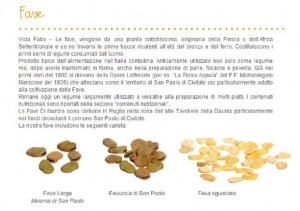
Dry Legumes
Broad beans have a long tradition of cultivation in Old World agriculture, being among the most ancient plants in cultivation and also among the easiest to grow. Along with lentils, peas, and chickpeas, they are believed to have become part of the eastern Mediterranean diet around 6000 BC or earlier. They are still often grown as a cover crop to prevent erosion, because they can overwinter and because as a legume, they fix nitrogen in the soil.
The broad bean has high plant hardiness; it can withstand harsh and cold climates. Unlike most legumes, the broad bean can be grown in soils with high salinity, as well as in clay soil. However, it does prefer to grow in rich loams.
In much of the English-speaking world, the name “broad bean” is used for the large-seeded cultivars grown for human food, while “horse bean” and “field bean” refer to cultivars with smaller, harder seeds (more like the wild species) used for animal feed, though their stronger flavour is preferred in some human food recipes, such as falafel. The term “fava bean” (from the Italian fava, meaning “broad bean”) is usually used in English-speaking countries such as the US, but “broad bean” is the most common name in the UK and Australia
The beans have a good share of iron and vitamin C which aids absorption, are then indicated in anemia. Being very rich in dietary fiber promote the proper functioning of the intestines. They are also diuretic and beneficial for the kidneys and urinary tract.
for information mail to:
goffredo@gcm.md
Copyright ® 2014 - AlBacio.it





Leave a comment